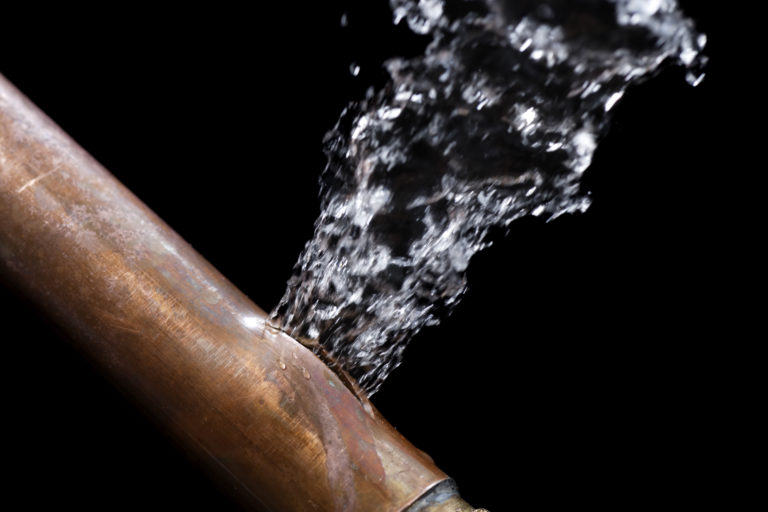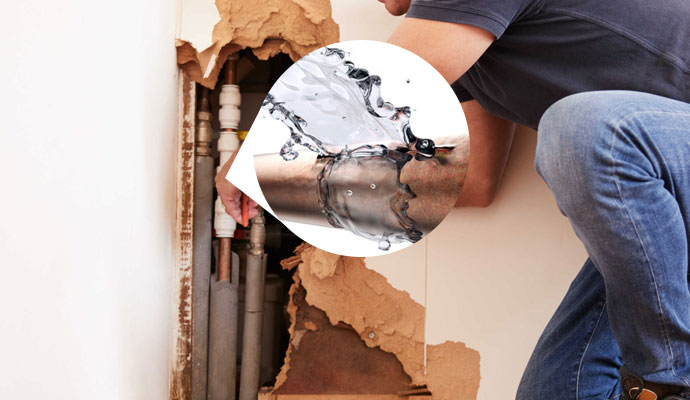Quick Overview: Identifying and also Fixing Burst Pipes in Your Home
Quick Overview: Identifying and also Fixing Burst Pipes in Your Home
Blog Article
How do you really feel with regards to How to install a dishwasher safely?

A ruptured pipe is a major emergency; you can just stand as you enjoy water you pay dearly to reunite with the planet. In even worse cases, you notice a swimming pool on your kitchen area flooring, which is an excellent trip hazard, specifically if you have children around. If the pipeline that ruptured was in your walls, trouble: you may need to paint that entire section.
Exactly how can a tragedy like a burst pipeline be protected against as well as taken care of? Well, by listening to your expert emergency plumbing professionals and adhering to these rules.
Exactly how do I understand when my pipes have ruptured?
Rising and fall water stress
Pipes do not simply burst in a day. You may have discovered that your kitchen area tap or shower does not run quickly when you turn the faucet. It may stop briefly for a few secs and then blast you with more pressure than typical.
In various other instances, the water may appear normal initially, then decrease in pressure after a few secs.
Wet wall surfaces as well as water stains
Prior to a pipe ruptureds, it will leakage, many times. If this consistent leaking goes unnoticed, the leakage might finish into a broad gouge in your pipe. One very easy means to prevent this emergency is to keep an eye out for damp walls ad water stains. These water stains will lead you right to the leak.
Puddles under pipelines as well as sinks
When a pipeline ruptureds, the discharge creates a pool. It might show up that the puddle is expanding in dimension, and regardless of how many times you mop the pool, in a couple of minutes, there's one more one waiting to be cleansed. Often, you might not be able to map the puddle to any noticeable pipes. This is an indicator to call an expert plumber.
Untraceable trickling sounds
Pipe ruptureds can take place in the most unpleasant areas, like within concrete, inside wall surfaces, or under sinks. When the house goes silent, you may be able to listen to an irritatingly persistent trickling noise. Even after you have actually examined your shower head as well as kitchen area tap, the trickling might continue.
Dear visitor, the leaking may be originating from a pipe inside your walls. There isn't much you can do regarding that, except tell a professional plumber.
Turn off the Water
When water ices up, it broadens in quantity by concerning 9 percent. And also it increases with remarkable pressure: The stress inside pipelines may go from 40 pounds per square inch to 40,000 psi! No pipe can hold that much pressure, so it bursts. The break might take place where the ice kinds, but more often, it happens where water pressure discovers a weak point in the pipeline. That might be inches or even feet from the frozen area. Find the water shutoff valve and shut off the water to prevent more damage. You may additionally need to shut off the electrical energy too, depending on where the leaks happens as well as how huge it is.
Infected water
Many people presume a ruptured pipeline is a one-way electrical outlet. Quite the contrary. As water drains of the hole or gouge in your plumbing system, impurities find their way in.
Your water might be contaminated from the source, so if you can, examine if your water tank has any issues. Nonetheless, if your drinking water is supplied as well as detoxified by the local government, you must call your plumber immediately if you see or scent anything amusing in your water.
What do I do when I find a ruptured pipeline?
Your water meter will remain to run also while your water wastes. To minimize your losses, discover the major controls as well as transform the supply off. The water pipe are an above-ground structure beside your property.
How to Fix & Detect a Leaking Pipe
How Do I Know if a Pipe is Leaking?
Leak detection tests can help you determine if your pipe has a leak. Even if you don’t see an apparent leak, you should still conduct leak detection tests regularly to save water and money—and prevent major damage to your home.
Water meter. It can be helpful to figure out what your usual water meter usage numbers are and then monitor them regularly. To monitor your meter, first, turn off all water faucets in your home. Check the meter and write down the numbers. In a few hours, check the meter again. If the numbers have changed, you have a leak. Water gauge. Use a water gauge to test your water pressure. Your showerhead should produce a certain amount of water pressure based on its model and design. If the pressure is lower than it is supposed to be for that specific showerhead, your home likely has a leak. Puddles. Look inside your bathroom, laundry, and kitchen sink cabinets. Puddles around the cabinets or around toilets, tubs, showers, and washing machines indicate the presence of a leaking pipe. You may also notice loose tiles, peeling or flaking paint, or mold caused by water accumulation. Napkin test. Even if you don’t see any puddles, you may still have a leak. You can test for water leaks in the bathroom, laundry, and kitchen by wiping below-sink connections with a napkin, paper towel, or piece of toilet paper. If it becomes damp, you probably have a leaking pipe under the sink. Discolored walls. Walls that are discolored—usually with brown or yellow stains—or bulging might mean that they have been impacted by water damage caused by a leaking pipe. Smell. A leaky pipe will create sitting water, and over time, that water may develop a musty smell. If your home smells musty, but you can’t locate the source, it may be due to a leak. Steps for Fixing a Leaking Pipe
A leaky drain can be remedied by tightening the pipe base, replacing the drain seal, caulking the rim, and tightening the pipe nut. Similarly, a leaking toilet pipe can be treated by tightening the packing nut. You may also need to replace the valve. A leaky faucet may just need tightening or replacement of the washers. If that doesn’t work, consider replacing your faucet. If your pipe has a hole in it, you may want to use a pipe leak sealer or pipe leak tape. This quick fix for water pipe leaks can also temporarily fix a copper pipe leak. https://www.ahs.com/home-matters/quick-tips/how-to-tell-if-pipes-are-leaking/

As a reader about How to Prepare for Your Dishwasher Installation, I thought sharing that post was important. If you appreciated our post plz don't forget to share it. I praise you for your time. Visit again soon.
Click Here!
Report this page